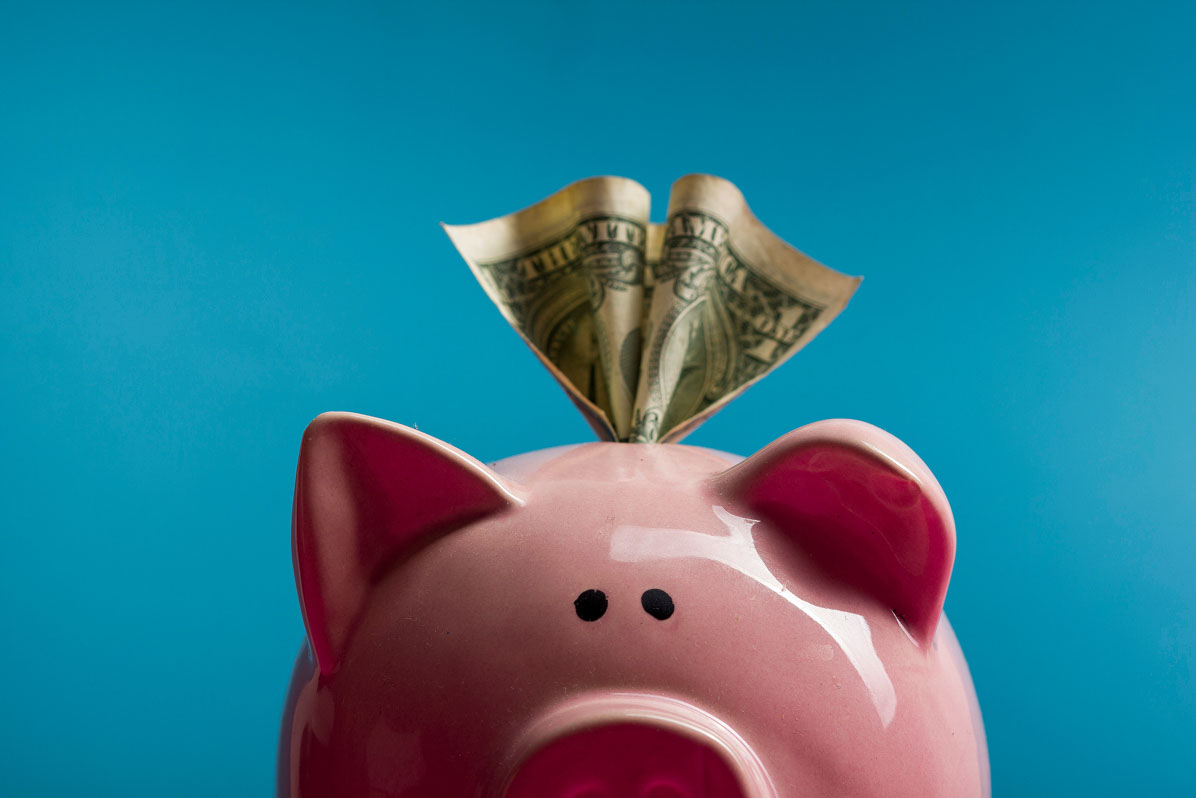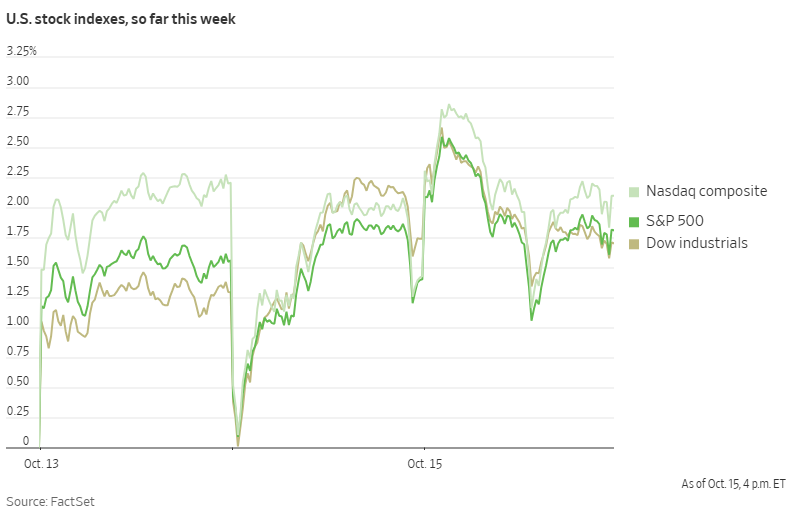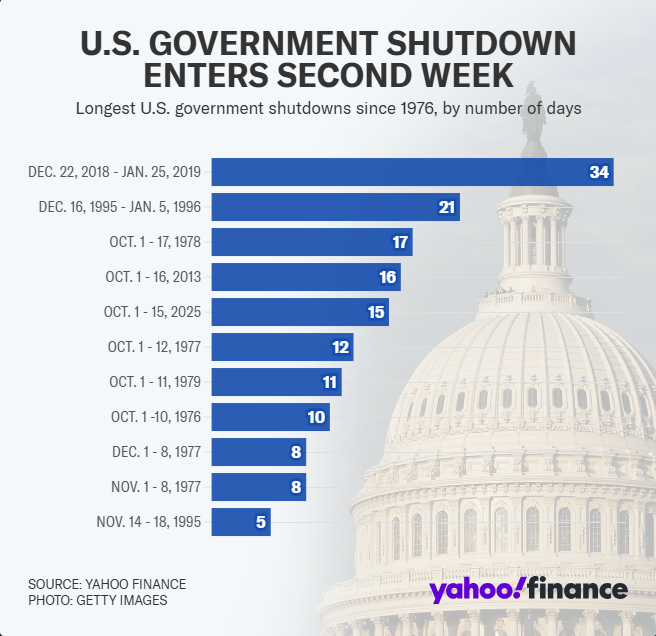ข่าวสารตลาด & มุมมองเชิงลึก
ก้าวนำตลาดด้วยมุมมองเชิงลึกจากผู้เชี่ยวชาญ ข่าวสาร และการวิเคราะห์ทางเทคนิค เพื่อเป็นแนวทางในการตัดสินใจซื้อขายของคุณ.

S&P 500 and ASX Rally as Big Banks Drive Markets
Both the S&P 500 and ASX have rallied on the back of stronger-than-expected major bank earnings reports on both sides of the Pacific.
In the US, Bank of America reported a 31% year-over-year increase in earnings per share at $1.06, exceeding Wall Street's estimate of $0.95. Meanwhile, Morgan Stanley delivered a record-breaking quarter with EPS of $2.80, a nearly 49% increase from the same period last year.

On the Australian front, the benchmark ASX 200 leapt 1.03% to 8990.99, with all four major Australian banks playing a major role. CBA closed 1.45% higher, Westpac 1.98%, NAB 1.87%, and ANZ 0.53%.
These strong bank results indicate broader economic strength, despite recent concerns about US-China trade tensions. US Treasury Secretary Scott Bessent emphasised that Washington did not want to escalate trade conflict with China and noted that President Trump is ready to meet Chinese President Xi Jinping in South Korea later this month.
With the third-quarter earnings season just getting underway, these early positive results from financial institutions could prove as the start of continued market strength through to the end of the year.
U.S. Government Shutdown Likely to Last Into November
Washington remains gridlocked as the U.S. enters its 16th day of shutdown. With no signs of compromise on the horizon, it appears increasingly likely the shutdown will extend into November and could even compromise the Thanksgiving holiday season.
Treasury Secretary Scott Bessent has warned "we are starting to cut into muscle here" and estimated "the shutdown may start costing the US economy up to $15 billion a day."
The core issue driving the shutdown is healthcare policy, specifically the expiring Affordable Care Act subsidies. Democrats are demanding these subsidies be extended, while Republicans argue this issue can be addressed separately from government funding.
The Trump administration has taken steps to blunt some of the shutdown's immediate impact, including reallocating funds to pay active-duty soldiers this week and infusing $300 million into food aid programs.
However, House Speaker Mike Johnson has emphasised these are merely "temporary fixes" that likely cannot be repeated at the end of October when the next round of military paychecks is scheduled.

By the end of this week, this shutdown will become the third-longest in U.S. history. If it continues into November 4th, it will surpass the 34-day shutdown of 2018-2019 to become the longest government shutdown ever recorded.
This prolonged shutdown adds another layer of volatility to markets. While previous shutdowns have typically had limited long-term market impacts, the unprecedented length and timing of this closure, combined with its expanding economic toll, warrant closer attention as we move toward November.
Trump Announces Modi Has Agreed to Stop Buying Russian Oil
Yesterday, Trump announced that Indian Prime Minister Narendra Modi has agreed to stop purchasing Russian oil. He stated that Modi assured him India would halt Russian oil imports "within a short period of time," describing it as "a big step" in efforts to isolate Moscow economically.
The announcement comes after months of trade tensions between the US and India. In August, Trump imposed 50% tariffs on Indian exports to the US, doubling previous rates and specifically citing India's Russian oil purchases as a driving factor.

India has been one of Russia's top oil customers alongside China in recent years. Both countries have taken advantage of discounted Russian oil prices since the start of the Ukraine invasion.
Analysis suggests India saved between $2.5 billion to $12.6 billion since 2022 by purchasing discounted Russian crude compared to other sources, helping support its growing economy of 1.4 billion people.
Trump suggested that India's move would help accelerate the end of the Ukraine war, stating: "If India doesn't buy oil, it makes it much easier." He also mentioned his intention to convince China to follow suit: "Now I've got to get China to do the same thing."
The Indian embassy in Washington has not yet confirmed Modi's commitment. Markets will be closely watching for official statements from India and monitoring oil trading patterns in the coming weeks to assess the potential impact on global energy flows and prices.
Chart of the Day - Gold futures CFD (XAUUSD)


The Volatility Contraction Pattern, (VCP) is a famous trading pattern identified and dissected by Market Wizard, Mark Minervini. The premise of the pattern is that stocks in long term up trends will pause and consolidate as some holders exit their positions and the stock is accumulated again by buyers in the market. The chart pattern can provide opportunities for powerful break outs and can be used across any time frame.
This allows traders to jump in on potential moves before they explode. Mechanics of the pattern The background of the pattern is relatively simple. The stock has been previously rising in an uptrend and has found some resistance.
It then moves into a period of consolidation categorised by 2-6 retracements with each one being smaller than the previous one. The volume should usually be decreasing as the chart moves to the right. The pattern culminates in a powerful break out that can often be long lasting.
The key for this pattern is that there needs to be a contraction of volatility as the chart moves from the left to the right. This highlights that the volume available is decreasing and becoming scarce. In addition, the more dramatic in volume, the more likely that the move will be explosive.
Below the breakout is accompanied by an increase in the relative volume. In the chart below for Natural Gas, the decrease in volume can be associated with the contracting candlestick pattern. This occurs prior to the break of the long-term resistance.
The breakthrough was also associated with a large amount of buying volume. The VCP can manifest itself in other patterns such as a cup and handle patterns. The key is that the candlesticks must be decreasing volatility.


A resistance level is a key tool in technical analysis, indicating when an asset has reached a price level that market participants are unwilling to surpass. Resistance levels are often used in conjunction with support levels, or the point at which traders are unwilling to let an asset's price drop much lower. To understand this fully, it’s important to understand how support and resistance works in general.
A support line is when a price hits a low point (on the selling side) and resistance is when the price hits a high (on the buying side). If the prices rebound back to this price or continue to hit this price without surpassing it, it then starts to become a key resistance or support level. As a rule of thumb when using technical analysis, these tools become very important for some traders.
This is due to those points offering various outcomes. Whether they are a Bounce or a Break, essentially meaning, does the price hit the support/resistance and comes back (Bounce) or does it go through the support/resistance lines (Breaks). It is important to also use other indicators to accompany your technical analysis, as these movements could also easily become reversals or break outs, meaning, instead of them following your prognosis the price does the opposite.
When a price has been rejected various times, it builds an even stronger key resistance. Trading volume and sentiment can help to propel a price past this point and some of the biggest movements come after a price breaks a key resistance. Using a current trend (Fig 1) and a hypothetical trend (Fig 2), let’s take the daily timeframe for BTCUSD as an example (below).
The daily candle has broken through a key resistance of $41,000 as shown on figure 1. If a trader identifies this, they can do one of two things; trade it aggressively and place a trade as it breaks through or trade it conservatively and wait for the former resistance line to become the new support line before placing a trade (so wait for the price to bounce off as outlined on the drawn projection and circled on figure 2). Figure 1.
Figure 2. This technical analysis can be used for any asset you wish to trade: it’s transferrable and key in identifying entry or exit points of trades. By learning to spot the patterns and combining this with knowledge of trading volume and sentiment, you can start to understand the markets better.
Sources: Babypips, Investopedia, @sell9000 Twitter.


We often talk about, ‘one piece of data does not make a trend,’ that ‘a headline is just a headline’ and that ‘assumptions are not facts.’ We feel this timeless market lesson has been slightly forgotten of late and the latest US CPI data may be case-in-point judging by the market’s reaction to the read. Let have a dive into the data and the reactions. Here are the headline grabs: The headline Consumer Price Index (CPI) rose by 0.3% from March, slightly below the forecasted 0.4% (good news), and increased by 3.4% year-on-year, in line with expectations.
Core inflation, (ex-volatiles like food and energy), also rose by 0.3% month on month and 3.6% year-on-year matching predictions. However, this is the main take away April was the lowest core inflation reading since April 2021 and the smallest monthly increase since December. But like I said – headlines are just headlines what’s the detail saying?
CPI gains were primarily driven by rises in shelter and energy costs. Shelter costs increased by 0.4% from March and 5.5% year-over-year, remaining a significant concern for the Fed's inflation targets. Rent of primary residence and owners' equivalent rent, both rose by 0.4% month-on-month, with annual increases of 5.4% and 5.8%, respectively, highlighting persistent inflationary pressures in housing and why housing is a massive issue inside the ‘sticky’ inflation metric.
Energy prices rose by 1.1% monthly and 2.6% annually, while food prices remained flat month-over-month but rose 2.2% annually. Vehicle prices declined, with used cars falling 1.4% and new cars dropping 0.4%. Other notable monthly increases were seen in apparel (1.2%), transportation services (0.9%), and medical care services (0.4%).
Transportation services saw a significant annual increase of 11.2%, while services excluding energy rose by 0.4% monthly and 3% annually. These inflation dynamics have us questioning the reactions that were seen as clearly the granular data in areas of issue like shelter, energy and services remain nearly 3 time higher than the Fed’s 2% target. Yet you wouldn’t know it.
The reaction from the three main US bourses was to reach record all time highs. The US500 for the first time ever broke through 5,300 points and the Dow is now inches from 40,000 points. Rate futures price spiked, with the September meeting expectation gauge going from a 61.4% chance of a rate cuts by the Federal Reserve to 75.3%.
The November meeting is now fully priced in and the chance of a second cut in December is above 69%. Again, I am asking the question based on the trends and longer-term data – is that likely? The trend has CPI year-on-year slowing to an average 3.6% - 1.6% away from target.
Sticky inflation is sitting at a 5% rolling average that’s 3% away from target. The reaction in treasuries hit FX particularly USD pairs. DXY was slammed falling 0.4% to 104.52 as the likes of the beaten-up EUR, GBP and other European currencies bounced back against the greenback.
These pair are tricky currently as all are facing rate cuts in the coming months – the question will be who goes first and then by how much to they cut over the new cycle? That will be the dilemma for traders as the more cuts the bigger the weaken. Then we have to look at the AUD/USD which jumped to its highest read since January 15 touching $0.6702 off the back of the CPI.
Since the mid-April low the pair has rallied almost a full 4 cents and with the RBA in a scenario of wait and see. The pressure to the upside remains in the AUD and cold lock the AUD into being the strongest currency in the G10 in the come months. It’s a pair to watch for sure.


Please find below the video recording from this weeks Inner circle session "Share CFDs" where we explored how this trading vehicle could be of benefit to many traders. We dispelled some of the myths surrounding Share CFDs and presented some ideas for alternative ways to use these as part of your trading toolbox. Please send any comments or questions to [email protected] Please note the disclaimer at the beginning of the video.
Mike Smith Educator GO Markets Disclaimer The articles are from GO Markets analysts based on their independent analysis. Views expressed are of their own and of a ‘general’ nature. Advice (if any) are not based on the reader’s personal objectives, financial situation or needs.
Readers should, therefore, consider how appropriate the advice (if any) is to their objectives, financial situation and needs, before acting on the advice.


Trading terms glossary A - B - C - D - E - F - G - H - I - J - K - L - M - N - O - P - Q - R - S - T - U - V - W - X - Y - Z - G Gapping Gapping is when the price of an asset moves higher or lower without any price activity in-between the pre-gap and post-gap prices. Learn more about Gapping. GDP Also known as Gross Domestic Product (GDP), it is the total value of goods and services manufactured in a country over a period of time.
It can also be used as the size and health indicator of a country's economy. Gearing ratio Gearing is a measurement of a company's financial leverage. In this context, leverage is the amount of funds acquired through creditor loans – or debt – compared to the funds acquired through equity capital.
Gross margin The amount of profit a company makes from its revenue is termed as Gross margin. GTC order This stands for `good `till cancelled` and is an instruction to buy or sell an asset at a specific limit. The order will remain valid and working in the market until it is either filled or cancelled.


Trading terms glossary A - B - C - D - E - F - G - H - I - J - K - L - M - N - O - P - Q - R - S - T - U - V - W - X - Y - Z - W West Texas Intermediate (WTI) West Texas Intermediate (WTI, also referred to as Texas Light Sweet) is an oil benchmark that is central to oil commodity trading. It is one of the three major oil benchmarks used in trading, along with Brent crude and Dubai/Oman. Working Order A Working Order typically refers to either a stop or limit order to open.
Working Orders are used to advise your broker to execute a trade when your desired tradable asset reaches a specified price. Learn more about Working Orders

